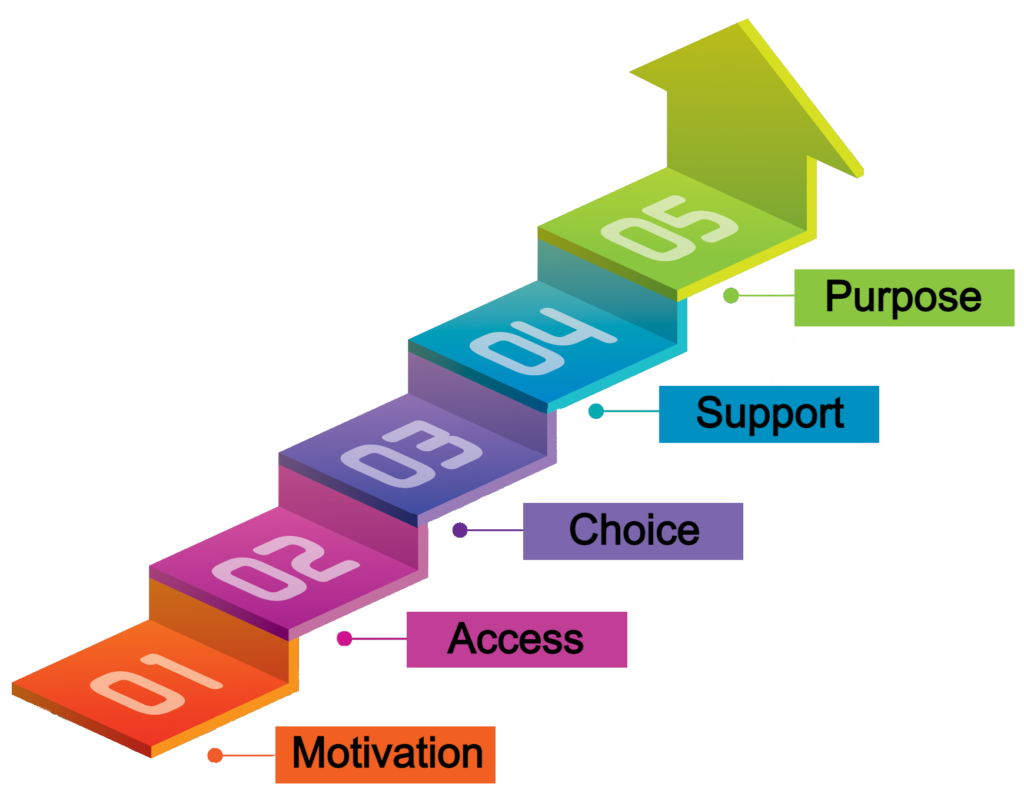I didn’t start reading until second grade. I didn’t participate much in school in first grade because of what was going on at home, and since my teachers didn’t pick up on that, they thought I was slow or had special needs. My mom had a meeting with the school and she decided to assign my sister Teresa to be my reading teacher. So most days after school, she would take me to the library and help me one on one to improve my reading skills. But she didn’t start with books that she knew would not interest me. She didn’t start with books that she thought were too easy for me. She started to teach me with books that I was interested in, books that I wanted to read. Well, within six months I was reading not only at grade level but above grade level and every time I went to the library, I would want more and more books. If my sister would have started with easy books that were quote unquote on my level, I would not have made the progress that I did.
This is the story that I thought of when I read the results of a study by Johns Hopkins and Chiefs for Change on acceleration. This study discusses learning strategies that are effective for students to catch up to their peers without starting over. So many studies have told us that it is not a wise practice to remediate students on either material they’ve already seen or materials they know will not be interesting. It is also not wise to retain or remediate students as these practices do not show effective outcomes for students. Well, this study shows us that learning acceleration teaches only what must be learned at a certain grade level, to focus on the most important and essential skills and content; elements that are minimally required for the students to access it in a real way.
Teachers have found this difficult in practice, especially those more traditional leaning teachers. Some teachers believe that students should not be or are not able to understand advanced or difficult concepts without all the background. The concept of learning acceleration challenges that by using a different method to catch students up, leaving out all material that will be irrelevant for learning this concept. The article gives an example of a fifth-grade teacher in a math class. His pre-assessment showed that 1/3 of the class was two years behind on the skill that he was about to teach. Instead of splitting up the class and only allow 2/3 of the class to learn the concept at grade level, he kept all the students in the room for the mini lesson teaching the concept to all students. Then in smaller groups he used aspects of the third-grade mastery skills for this topic to differentiate practice work so that all students were learning at their level. The homework then followed the trend of the small group instruction with grade level challenges included.
Another recent study on acceleration was done by Zearn Math and TNTP (formerly known as the New Teacher Project). It showed that students who were exposed to learning acceleration learned more and struggled less than their peers who experienced remediation, proving that students respond well to acceleration strategies. They also showed that students of color and those from low-income families get great benefit from learning acceleration vs. remediation.
There are 2 elements that are important for looking at the school year through a learning acceleration lens, according to the Johns Hopkins study. The first is choosing a smaller set of standards to teach throughout the year. There are national organizations and publishers that are helping to define these, and this may affect how the standards are looked at in the future. Second, teachers must use and get better at formative assessment: Introductory projects and student discussions, exit tickets, targeted (natural) checks for understanding, and reviewing student work against the standards desired.
SEE HOW WE MAKE THIS HAPPEN Shatta-I Services
The old ways of instruction continue to prevail in many schools, but the power of new strategies and understandings like learning acceleration could really help turn a corner for under-served students. This new learning is about being a good observer, and using that data to personalize instruction in a way that goes beyond normal student growth. It’s not magic but it does take hard work. Are we up for it?

Written by Shatta García Mejía – Head Advocate of Shatta-I Consulting ©

Leave a Comment